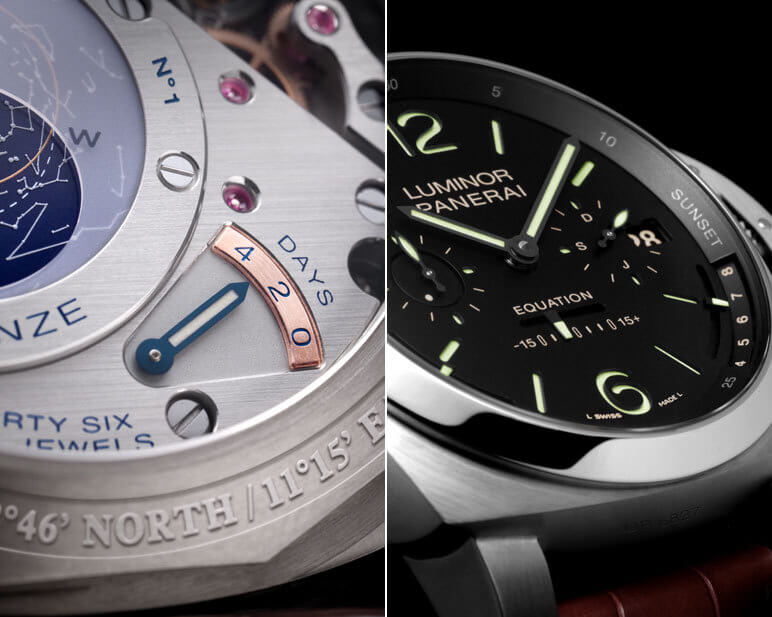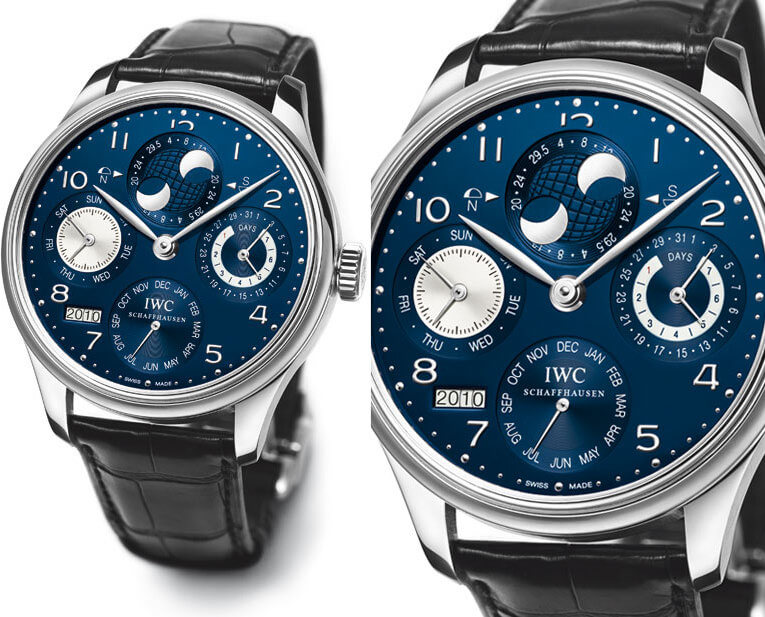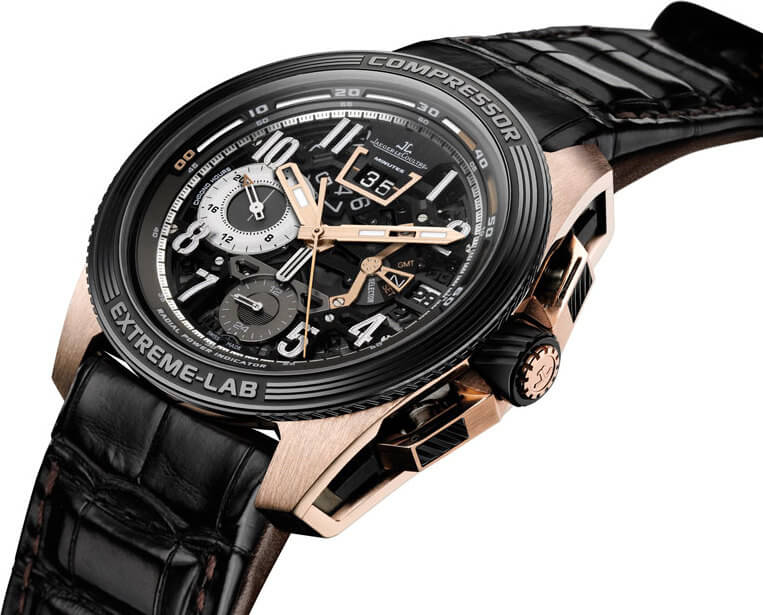Indeed, many of the brands exhibiting at the SIHH 2010, from January 18th to 22nd, presented complication timepieces featuring astronomical indications. For Panerai, this has been an opportunity to celebrate the 400th anniversary of a major discovery made by Galileo in Florence, incidentally Panerai’s city of origin. “In January 1610, Galileo Galilei observed the motion of Jupiter’s satellites, which he christened the Medicean Planets in honour of his patron Cosimo II de’ Medici. Their existence provided empirical proof of extraordinary importance supporting Copernicus’ heliocentric theory. This observation was made possible thanks to new lenses, ground in Florence where expert artisans worked and whose art was once again put to good use centuries after by the Panerai workshops. Thanks to his celestial observations, Galileo also tackled a challenge of enormous importance at that time: the calculation of longitude at sea.”
Panerai honours Galileo
Panerai is celebrating Galileo’s findings, which include the isochronism of the pendulum’s oscillations, with the unveiling of the Luminor 1950 Equation of Time Tourbillon Titanio, the Astronomo, driven by the P.2005/G Manufacture movement. As the most technically sophisticated wristwatch ever made by Panerai, it comprises a 30-second tourbillon that rotates perpendicular to the axis of the balance, equation of time, indication of sunrise and sunset times in the city chosen by the wearer and, on the back, a chart of the night sky in that city. The Astronomo has three barrels for a four-day power reserve, also shown on the back.
Not content with this extraordinary creation, with the support of the Florence Science Museum, Panerai has produced a planetarium-clock with perpetual calendar, the Jupiterium Panerai, which “from a geocentric position, shows the positions of the Sun, Moon, Jupiter and the “Medicean planets,” namely Jupiter’s four main satellites, today known as Io, Europa, Ganymede and Callisto.” The Jupiterium is enclosed in a transparent globe which represents the heavenly skies. It is formed by two semi-spheres for the austral and boreal hemispheres. Between them is a thin band that symbolises the equator and on which the signs of the zodiac are engraved. Both these semi-spheres are studded with constellations. These are coated in Super-LumiNova® so that they too can shine at night.
Jaeger-LeCoultre calculates sidereal time
Outside the SIHH, Louis Moinet caused a sensation with another astronomical instrument, Meteoris. This innovative planetarium depicts the entire Solar System with Mercury, Venus, Earth, Moon, Mars, Jupiter, Saturn, Uranus, Neptune and even Pluto orbiting around the Sun. Meteoris is the work of Rémy Chauvin, a doctor and specialist in gears who also devised the astronomical clock at the Horological Museum in Morteau, France, a work of 1,680 components that took fourteen years to complete. One of the distinctive features of Meteoris is its speed of rotation. Accelerated 852,000 times, the Earth rotates around the Sun in 37 seconds instead of the usual 365 days, making it possible to more clearly apprehend the workings of the planets. A one-off creation, its time differential is just four seconds in 164 years, the time it takes Neptune to orbit the Sun. Four of the brand’s Tourbillon Meteoris watches have been set into the base. Each is incrusted with a different meteorite stone: one from Mars, one from the Moon, one from an asteroid close to the Sun, and one, probably from Mercury, which is four and a half million years old.
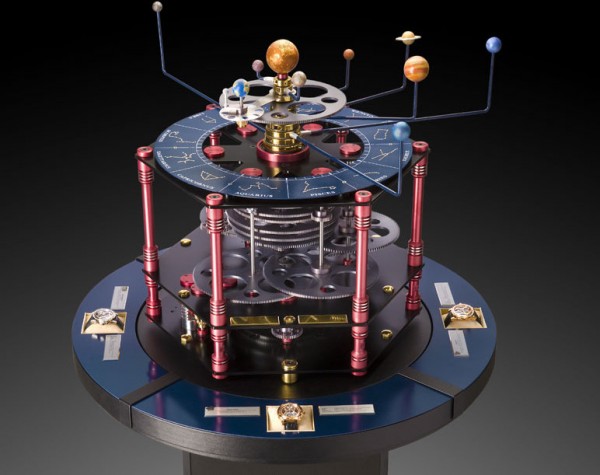
Other names have distinguished themselves in the creation of astronomical timepieces this year. Jaeger-LeCoultre has unveiled its Grande Tradition Grande Complication in which a minute-repeater is joined by a flying tourbillon and a sidereal zodiac calendar. As the Manufacture explains: “The Master Grande Tradition Grande Complication is fully dedicated to astronomical timekeeping. Its main asset therefore, and its most striking feature, is the flying tourbillon that acts as the hour hand, showing not the mean time as found on all wristwatches but the unit of time which astronomers use to keep track of the direction of the stars: sidereal time. To underline these celestial intentions that make the watch a perfect tool for astronomical observations, a zodiac calendar is placed around the outside of the dial together with a month indication to further depict the position of the stars at any given time of the year via an annual calendar which regulates the timing system.”
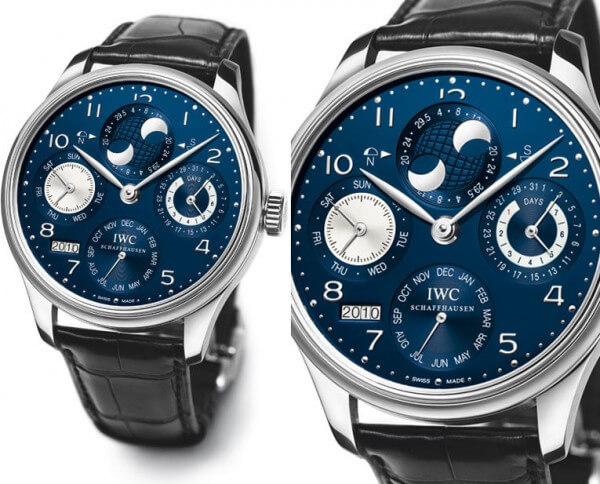
A host of perpetual calendars
Audemars Piguet proposes an Equation of Time in its Royal Oak range, a complication previously reserved for the Jules Audemars collection, which this year comes with a perpetual calendar complication. IWC has returned to its legendary Portugaise, also with a perpetual calendar. Vacheron Constantin has enriched its Patrimony Traditionnelle range with the Calibre 2253 which incorporates a tourbillon, perpetual calendar, equation of time and sunrise and sunset times. “Despite supporting extra mechanical complexity compared with its predecessor, the 2250, the Calibre 2253 exhibits a breathtaking amount of power reserve: some 336 hours or 14 days of running time drawn from two pairs of coupled barrels. This power reserve is clearly visible through the sapphire-crystal case back.” In watchmaking at least, the year of astronomy looks set to continue into 2010.








